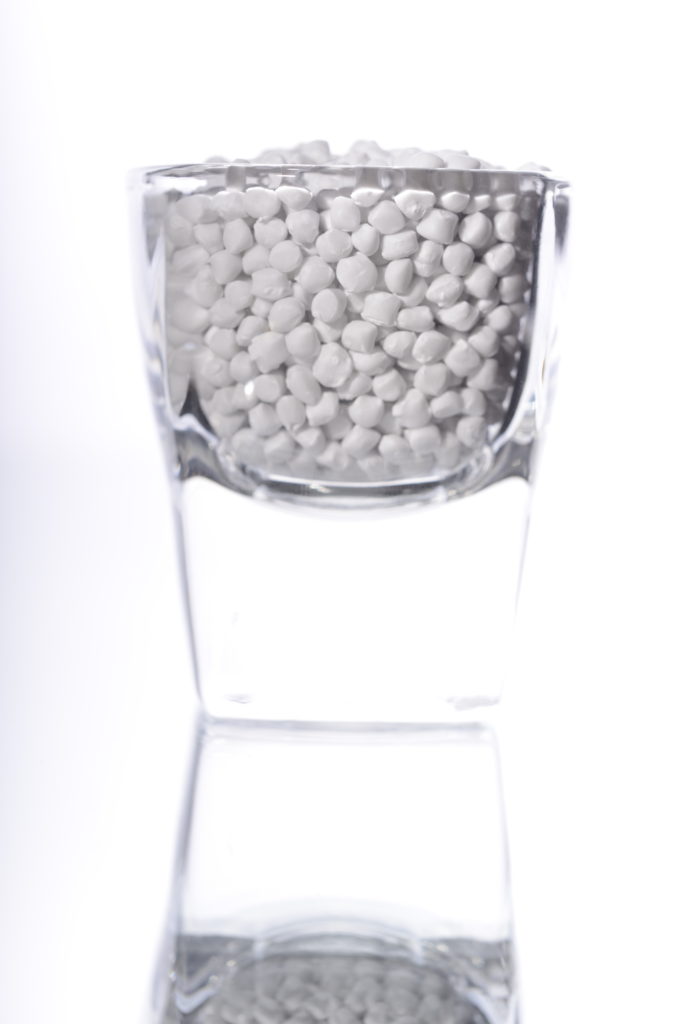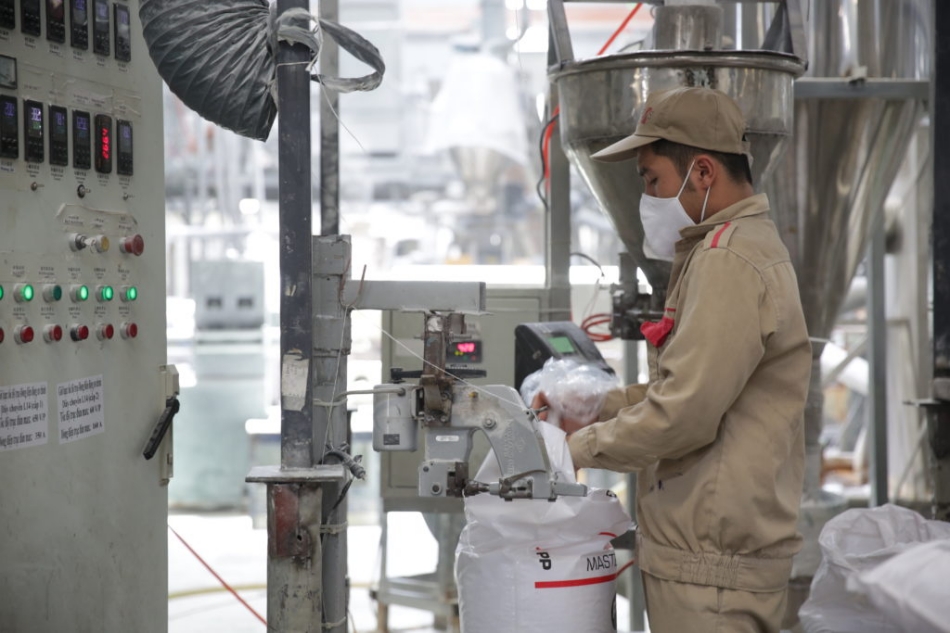The use of filler masterbatch, especially PP filler has considerably increased over the last decade. PP woven is one of the largest contributors to PP calcium carbonate filler consumption. So, how exactly does the woven sector benefit from PP filler? Let’s find out in this article!
Polypropylene (PP) had been widely known for its great mechanical properties. Thus, it is used in many applications such as laminated film, household appliance manufacturing, and non-woven, specially woven industry. However, the use of fossil materials comes at the cost of high expense and great uncertainties, which may pose a threat to plastic enterprises’ sustainable development. That’s why PP calcium carbonate filler is introduced in the manufacturing of PP woven.
I. PP calcium carbonate filler - What is it?
PP calcium carbonate filler (also known as PP filler masterbatch) is a combination of PP resin, calcium carbonate (CaCO3), and other specific additives. Depending on woven requirements, a suitable loading rate of PP filler will be determined (normally from 15% to 40%). The integration of some common additives (dispersion agent, processing aid,...) is to boost the performance of the final combination during the manufacturing process.
 PP filler masterbatch is made of PP resin, calcium carbonate (CaCO3), and other specific additives
PP filler masterbatch is made of PP resin, calcium carbonate (CaCO3), and other specific additivesII. How does PP calcium carbonate filler benefit PP woven?
1. Reduce production cost
The magic of PP calcium carbonate filler lies in its main component, CaCO3. Taking up to 70% of overall weight, it reduces the amount of PP resin needed, thus significantly lowering the production cost. Besides, thanks to its natural availability, CaCO3 is much more reasonable and stable than PP resin. Thus, the use of this material can effectively save production expenses and minimize the negative impacts of market fluctuations.
2. Enhance mechanical properties
Another plus point of PP filler is its ability to increase PP woven mechanical properties such as flexural strength, impact strength, and tear resistance. Since PP resin is also a component of PP calcium carbonate filler, it is easily compatible with current plastic combinations, thus accelerating the dispersion on the woven bags’ surface. Besides, PP filler also helps woven yarn to be better in shape as it increases stability during the manufacturing process.
3. Increase productivity
Thanks to calcium carbonate’s great thermal conductivity, PP filler masterbatch can shorten the time required for each product cycle as well as save a large amount of energy consumed, which accelerates productivity and efficiency.
 PP filler helps shorten the time required for each product cycle
PP filler helps shorten the time required for each product cycle4. Improve the printability of the PP woven
Sometimes, printing on PP woven bags may be difficult due to the physical properties of their surface. Thanks to the use of PP calcium carbonate filler, the printability of your PP woven will definitely have higher quality.
5. Reduce carbon footprint
There is no denying that the plastic industry is a great contributor to environmental pollution due to its huge consumption of fossil materials. However, this could be solved by the application of a PP filler masterbatch. As calcium carbonate (CaCO3) is more environmentally friendly than fossil resin, it reduces the amount of carbon dioxide released during the manufacturing process, thus contributing to environmental protection.
III. How to use PP calcium carbonate filler in the most effective way?
As mentioned above, the use of PP calcium carbonate filler largely depends on technical requirements and manufacturing conditions of the PP woven. There are two main types of PP woven products including: PP woven sacks/bags (small size, normally from 10 to 100 kgs) in various industries: cement, fertilizer, animal feeds, rice, sugar, grains,... and jumbo bags/FIBC (500 kgs and above) in containers. To achieve the best result, plastic enterprises should consider the following criteria:
- Denier (D) is an American measurement unit which determines the number of grams of yarns in 9000 meters, thus indicating the thickness of fabric. This index gives us clues about the type and the usage rate of filler masterbatch. The thicker it requires, the higher proportion of filler needed. In case your expected denier is lower than 400 and filler loading rate doesn’t exceed 15%, PE filler will be a better choice as it improves the elongation and consistency of yarns as well as minimizing the yarn’s breaking.
 Denier gives us clues about the type and the usage rate of filler masterbatch
Denier gives us clues about the type and the usage rate of filler masterbatch- Extruder speed - this factor determines the loading rate of filler. There are two types of speed related to the extrusion phase: Revolution of screw (rpm) and operating speed (mpm). Nowadays, high-speed extruders tend to be more popular as plastic enterprises wish to boost productivity.
- Processing temperature: There are 3 types of temperature needed to be considered:
+ Temperature of the extruder: This is very important in PP woven manufacturing. Temperature must be high enough to completely melt PP in the liquid form.
 Temperature must be high enough to completely melt PP in the liquid form
Temperature must be high enough to completely melt PP in the liquid form+ Temperature of the cool water tank: It is proved that to achieve the best impact strength and elongation, yarns should be cooled at the temperature between 30 and 40 degree celsius. Simultaneously, the water tank should be extremely quiet to minimize the formation of vibration that may result in the inconsistency of the yarns.
+ Temperature of the heater: An appropriate temperature will help the yarns be more consistent in shape as well as preventing the formation of grooves on the yarns.
For the coating/lamination phase, plastic enterprises can also apply PP filler to reduce production cost and productivity. Some factors that should be taken into consideration are: the number of layers laminated, the thickness of film, the speed of the machine.
EuroPlas PP calcium carbonate filler
EuroPlas is one of the leading filler masterbatch manufacturers worldwide. With nearly 14 years of experience, we take pride in providing millions of customers in over 80 countries with excellent quality filler masterbatches. Our PP filler masterbatch is a perfect combination of PP resin, calcium carbonate, and specific additives. Its outstanding advantages make it widely used in various industries such as injection molding, extrusion molding, laminated film, and woven,... Out of them, woven is one of the most vital applications of PP calcium carbonate filler. The use of PP filler really revolutionized woven products as it not only reduces production costs but also enhances a large number of properties. Most importantly, our calcium carbonate filler is customized based on customers’ requirements, thus making it exactly fit your expectations.
For further information and consultation, please contact us!